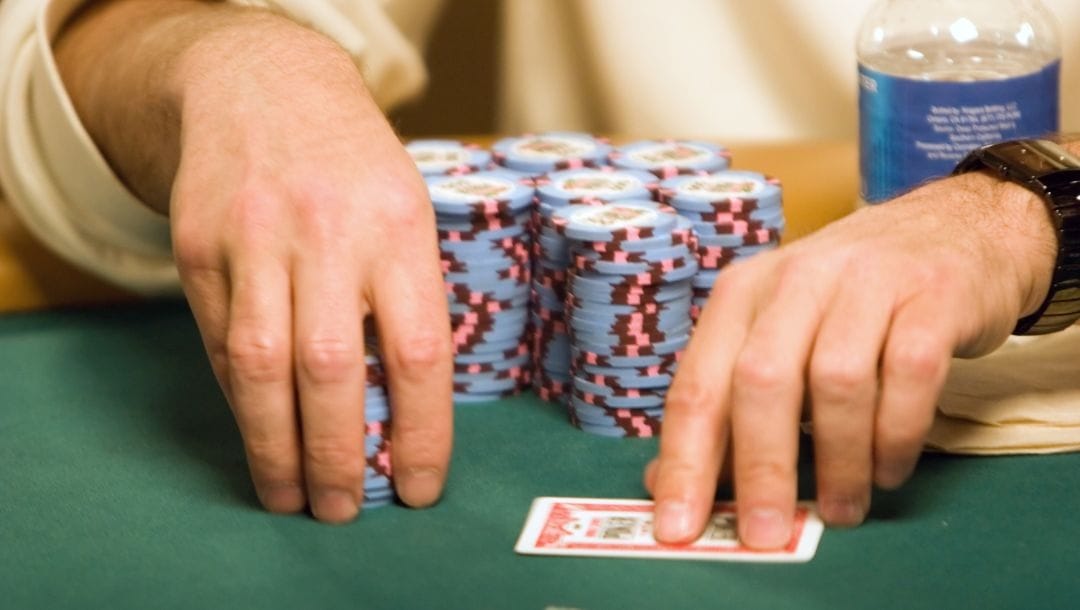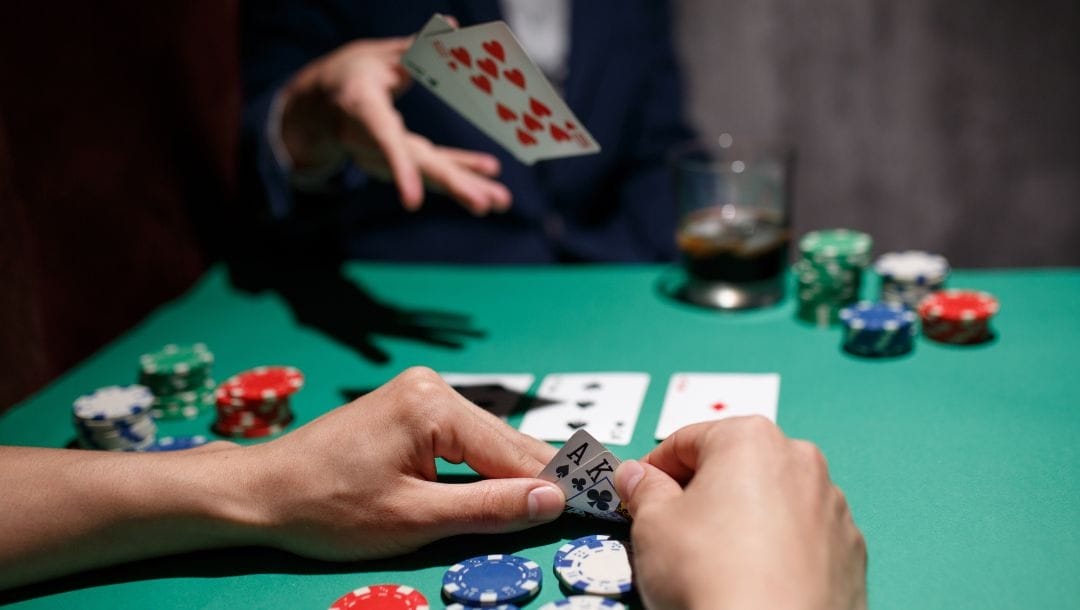Win more online poker tournaments with our guide to the “Ten-to-One Rule” in tournament poker. Find out when to go all-in with confidence.
The “Ten-to-One Rule” in Tournament Poker

You are at the final table. Eight players remain. The blinds are at 500/1000 and you’re on the small blind with a stack of 100,000. All the players fold; you check your hand and see 9-2 off suit. A glance at the big blind shows a stack of 10,000. You have ten times his stack. What do you do, especially in online poker, where it can be hard to read an opponent? Easy. You go all in.
Having considered some general all-in poker strategy tips, especially in poker tournaments, this blog examines the case for the Ten-to-One rule in tournament poker.
A Quick Look at Going All-In Preflop

When do you go all-in preflop in a poker game? Is it when you want to take advantage of your Pocket Aces, pocket kings, or pocket queens? Or are you playing in a tournament with the blinds are slowly chipping away at your stack? Do you want to shake things up and test the board with a stone-cold bluff? As usual, the strategies to employ in making a decision depend on the type of game you’re playing (No-Limit Holdem, cash games, tournament poker,) your hand, your position, your stack size, and the kind of opponent you’re up against.
For the sake of simplicity and to eliminate at least one variable (because they all lead to unique situations, which, in turn, have specific poker tips tailored to that situation,) let’s focus exclusively on all-ins preflop.
A good place to start is with your hand. Pocket aces, pocket kings, pocket queens, and ace-king all have a potent ability to be a magic carpet to carry you all the way to the river. With that, a potential 100% or more increase of your stack. So also, pocket jacks and ace-queen in certain situations. Depending on the situation (for example, when your stack is dwindling to around 20BB) and the type of player you’re up against, this range can be widened a bit to include hands like king-queen, king-jack as well as mid and small pocket pairs like nine-nine, eight-eight, seven-seven and six-six. At its most basic level, if you want to go all-in, the premium hands are a good bet at any point in the game. As it gets later in the tournament, you may want to widen your range to include all pocket pairs, all Ax hands, and some suited connectors, like 8-7. This is also a decision you make only once you’ve factored in the size of your stack as well as your opponent and his style of play.
As a general rule, it’s more profitable to go all-in against a loose player than a tight player. A loose player is more likely to call with a wider range of hands, which increases your odds of getting a return on your all-in.
And when your stack is getting shorter, and you’re down to, say, 10BB, you may also want to open up the range you decide to go all-in with even wider.
So, having studied the basic tournament rules of poker inside out and put in a fair amount of time at the tables playing online poker, you’ll almost certainly be familiar with the final table.
The Case for the Ten-to-One Rule in Tournament Poker

In both poker tournaments and the Independent Chip Model (ICM), a mathematical calculation of the effective value of each chip stack related to the payouts of the event comes into play. Using stack sizes, the formula determines, at any given moment in the game, the odds of a player finishing in a certain position. For instance, depending on the different ICM factors, an easy call in the early stages of a tournament may turn into an easy fold on the final table. This is the value of having a knowledge of ICM and how it affects your chip value. According to ICM, the stack value of, say, the chip leader almost never reflects the value of the first prize.
Using the example mentioned, there are eight players on the final table. You’re the chip leader on 100,000 on the small blind with 9-2 off suit. The big blind has a stack of 10,000. It’s a clear ten-to-one situation. The first prize is $3,000, with the money bubble in sixth place. The real value of your stack, however, is not $3,000. After ICM calculations and taking into consideration all the stack sizes, the value of your stack is around $1,099, and the value of your opponent’s stack of 10,000 chips is, in fact, $144. So, basically, ICM calculations give you an idea of the cash game equivalent of a tournament.
If the big blind calls your all-in and you win, you stand to increase your stack with 10,000 chips and bump up your stack value to $1,243. Should you lose, your stack will shrink to 90,000. But what is the value of your stack at that moment? According to ICM calculations, it would have dropped to $1,001. It’s a difference of only $98 you stand to lose, compared to the stack value of $144 you stand to win.
It’s clear that going all-in at this point, even with poor hands like 9-2 or 7-2, there’s more of a chance to increase the value of your stack (and increased chances of taking first prize) than the other way around.
A bonus is that the big blind with the small stack has an effective calling range of only the top 20% of the cards that would be profitable in terms of ICM. You, the small blind, can shove more hands, 100% of your hands, in fact, because the big blind has to fold more often.
This is one of the few situations in poker where everything is clear-cut. If you’re on the final table and up against an opponent with a tenth of your stack, go all-in with every hand, every single time, so you can take advantage of the “Ten-to-One Rule” in tournament poker.
Play Live Poker Online at BetMGM
Play better poker — register at BetMGM and hone your online poker skills on the mobile app. Join cash games with appropriate buy-ins and take part in as many daily, weekly, and monthly poker tournaments as you’d like. Be the best player you can at BetMGM.


